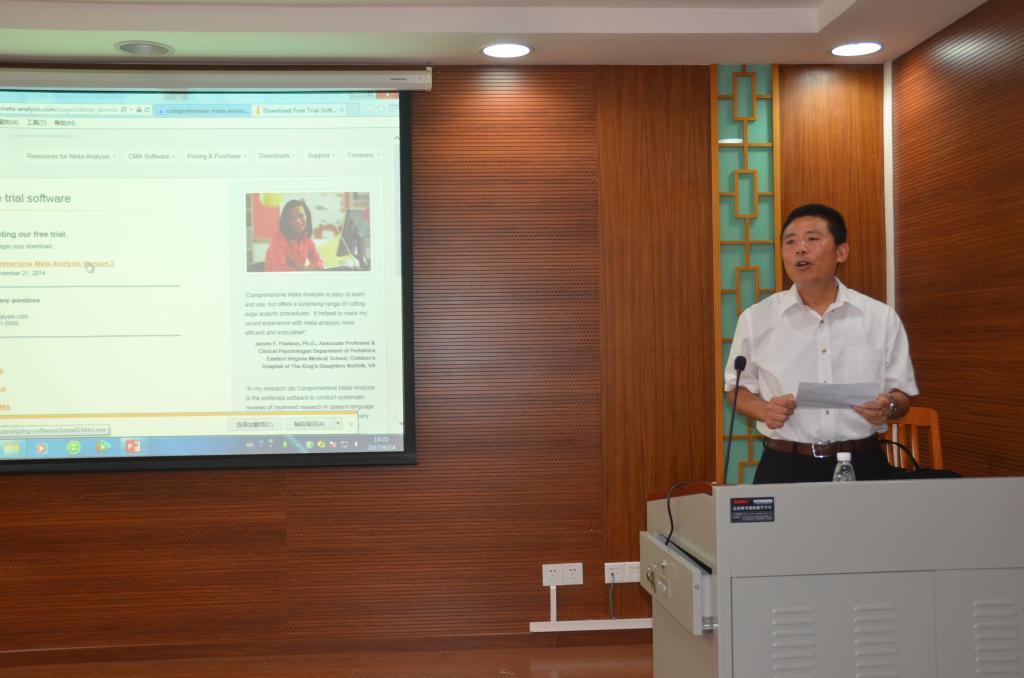On the afternoon of June 14th2017, Dr. Li Shaofeng from the University of Auckland was invited to organize theworkshop “How to Do Meta-Analysis” at the Center for Linguistics and AppliedLinguistics. The lecture was hosted by Professor Ren Wei, and warmly welcomedby the participating teachers and students from the Center and the Faculty ofEnglish Language and Culture.
Based on the previous lectureabout meta-analysis, Dr. Li directed participants to download online themeta-analysis tool of Comprehensive Meta-Analysis (CMA) and guided them throughthe procedures of conducting a small-scale meta-analysis. Dr. Li began with howto prepare for a meta-analysis. There were five steps: start CMA and open ablank spreadsheet, click Insert andthen “Column for” to decide on the items needed, choose data types, determinegroup information and name the groups. Then Dr. Li demonstrated how to codedata in meta-analysis, which included typing in the result data of primarystudies into CMA and reanalyzing their effect sizes. Taking corrective feedback(CF) research in SLA as the primary studies, Dr. Li explained in detail thecoding process and its meaning. Finally, Dr. Li introduced in detail threemajor methods of data analysis in meta-analysis. They were overall analysis ofeffect sizes, comparison of effect sizes between groups and evaluation ofmoderator variables. Dr. Li conducted these three analyses on data from primarystudies of CF and explicated how to interpret statistical results.
Although the workshop lasted onlytwo hours, all the participants were greatly impressed. They brought personalcomputers and had their first experience of how to conduct meta-analysis. They interactedactively with Dr. Li and consulted him screening criteria and methods ofmeta-analysis. The workshop deepened their understanding of issues relating to meta-analysisin applied linguistics.

